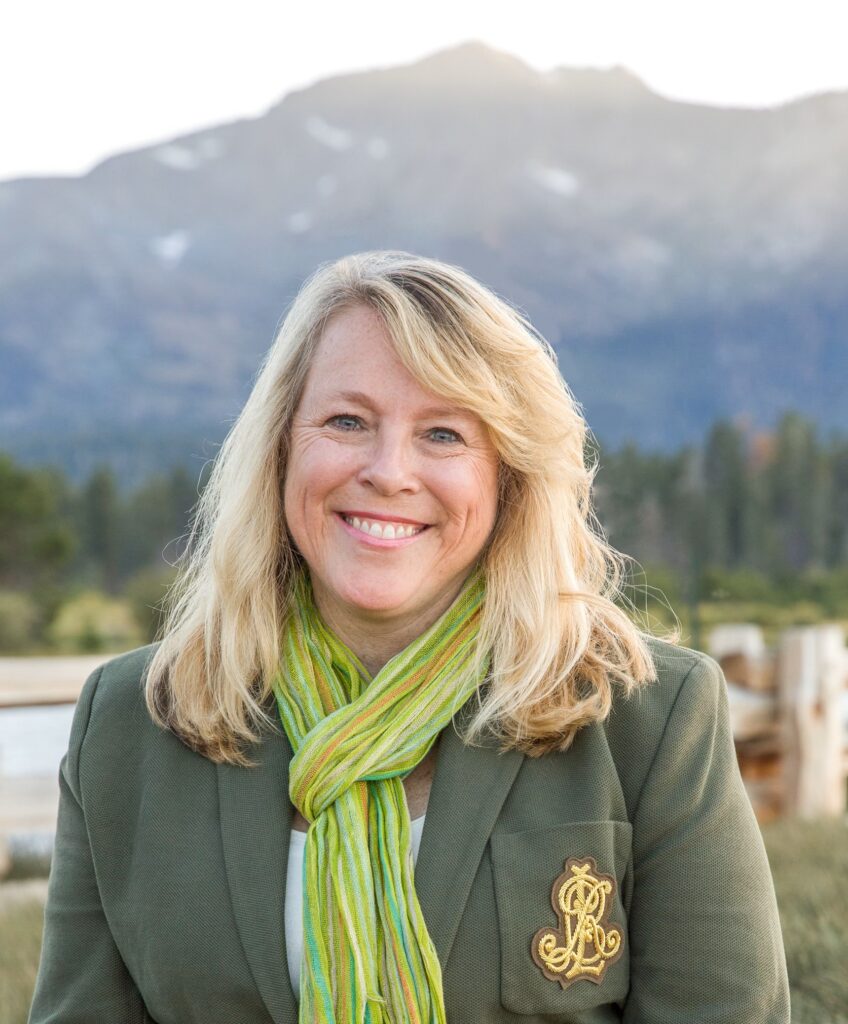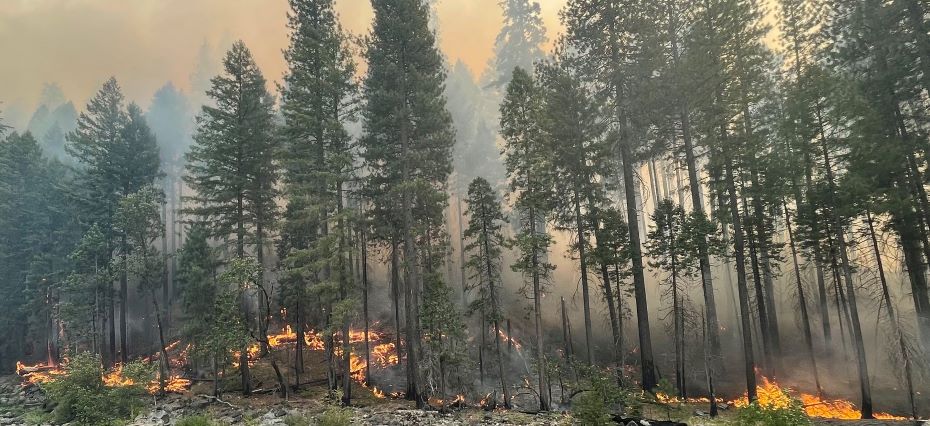
By Julie Regan
The warming weather and rapidly melting snow around Tahoe are welcome signs that summer is on its way. As wet and green as things are, now is the time to be extra vigilant and to prepare for wildfire season. Meteorologists are predicting that temperatures this summer could be even higher than last year’s record-breaking heat, which could increase wildfire danger as well. Living at home in the forest comes with the understanding that it isn’t a question of if, but when the next wildfire will occur.
According to the Sierra Nevada Conservancy, over the past 120 years only six fires have burned more than 200,000 acres in the Sierra Nevada, and all of them happened within just the last 14 years. As I think back to the 2021 Caldor Fire, visions surface of thick smoke, orange skies, and evacuating from my Christmas Valley home as the fire burned its way toward Lake Tahoe. Although the Caldor’s destruction was greatest outside the Tahoe Basin, it burned close to 10,000 acres in the southern watershed, making it the largest fire ever recorded at Tahoe. Tahoe Strong is the rallying cry from the fire that continues to give me a greater sense of purpose in preparing for wildfire.
Preparedness
May is Lake Tahoe Wildfire Awareness Month, and the Tahoe Regional Planning Agency (TRPA) has worked with our partners on the Tahoe Fire and Fuels Team to line up free resources and public events to help everyone get prepared by signing up for emergency alerts, preparing personal evacuation plans, and learning how to reduce wildfire risk around homes and neighborhoods.
Evacuation planning is progressing at the regional scale as well. The recent tragedy in Maui and our own experience during the Caldor Fire evacuation have heightened public safety concerns. With this awareness at the forefront, TRPA has secured $1.7 million in federal funding to facilitate with our partners integrated evacuation planning and critical upgrades to our communications and transportation infrastructure during emergencies.
We also understand that this process must consider Tahoe’s most vulnerable community members, many of whom do not have access to a car during an evacuation. Last year, TRPA gained valuable insights to the needs of underrepresented residents through the first Transportation Equity Study ever conducted for Lake Tahoe communities. The award-winning study and the connections we developed with underserved communities will help emergency management agencies prioritize the safety of all who call Lake Tahoe home.
Progress Toward Forest Resilience
The Tahoe Fire and Fuels Team is leading the way in collaborative, multi-jurisdictional forest management. Following the 2007 Angora Wildfire, TRPA joined basin fire agencies in forming the group to help improve coordination, increase the pace of forest fuel reduction projects, and streamline homeowner defensible space.
The strengthening of regional collaboration has delivered substantial progress. Since 2008, more than 75,000 defensible space inspections have been conducted, 72,000 acres of forest have been treated for fuel reduction, and nearly every USDA Forest Service or state-owned conservation lot in the Tahoe Basin has received initial treatment for fuel reduction. Landscape-scale restoration strategies such as the 59,000-acre Lake Tahoe West Restoration Partnership are coming forward to treat much larger, interconnected areas and incorporate water quality and recreation improvements with greater protection for communities.
Confronting Challenges Ahead
Higher temperatures, megafires, and prolonged drought are changing the ecosystem and the stakes have never been higher for the lake and our communities. In coordination with the Tahoe Fire and Fuels Team, we are working toward the target of treating an additional 9,000 acres near communities in the Wildland Urban Interface by 2025. TRPA is also helping accelerate projects to upgrade water supply infrastructure to fight fire and prioritizing forest fuel reduction along Lake Tahoe’s evacuation corridors.
Continuing to bring critical resources and funding for this work is a major priority as well. Since 2010, $167 million has gone into forest health projects in the basin and a key piece of legislation could expire this year that has provided a significant source of federal funding. TRPA and a coalition of Lake Tahoe supporters are working with Lake Tahoe’s Congressional delegation to extend the Lake Tahoe Restoration Act, which could unlock an additional $300 million for priority restoration projects at Tahoe.
Wildfire awareness and preparedness will help keep us Tahoe Strong. Visit Tahoelivingwithfire.com to learn more.
Julie Regan is Executive Director of the Tahoe Regional Planning Agency.
Image above: A surface fire on the 2021 Caldor Fire burning at lower intensity. Credit CALFIRE Official

